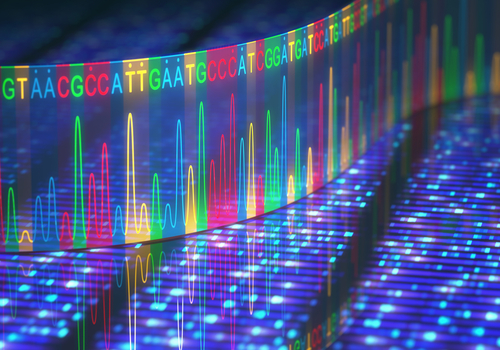Gene Therapy with Small RNA Molecules May Correct Processing Errors in AADC, Study Says

Gene therapy with small RNA molecules may be a promising therapeutic strategy to correct RNA processing errors in aromatic l-amino acid decarboxylase (AADC) deficiency, a study says.
The findings of the study, “Mutation-adapted U1 snRNA corrects a splicing error of the dopa decarboxylase gene,” were published in Human Molecular Genetics.
AADC deficiency is a rare genetic disorder caused by mutations in the DDC gene, which provides instructions to make the AADC enzyme. This enzyme is necessary for the production of neurotransmitters — chemical substances that allow communication between nerve cells — in the brain, particularly dopamine and serotonin.
Previous studies have shown the disorder is more common in Chinese patients due to a founder mutation (IVS6 + 4A > T) that affects the splicing — the processing of RNA molecules — of the DDC gene.
In the process of creating a protein from a gene, an intermediate messenger RNA molecule is produced, but before it can direct the synthesis of a protein, the messenger RNA must be processed.
One of the steps in this processing, called RNA splicing, involves the removal or “splicing out” of certain sequences referred to as intervening sequences, or introns. The final mRNA thus consists of the remaining sequences, called exons, which are connected to one another through the splicing process.
The splicing mutation in the DCC gene causes an insertion of nucleotides — the building blocks of DNA — in the gene sequence, destroying a splicing site in intron 6, and thereby generating an abnormal protein.
In normal conditions, gene splicing sites are recognized by the U-specific small nuclear RNA — called snRNA, which are small RNA molecules that are located in the cell nucleus and regulate gene splicing — U1, U2, U4, U5, and U6. U1 is the first to be recruited to the gene splicing site, where it helps remove introns to create the final gene sequence that provides instructions to make a functional protein.
In this study, a group of researchers from the National Taiwan University Hospital and collaborators set out to evaluate the therapeutic potential of custom-made U1 snRNA constructs designed to recognize the mutated splicing sequences of the DDC gene in a mouse model of AADC deficiency.
To this end, investigators first performed in vitro experiments using a mutated human DDC minigene containing exons 6 and 7, and a shortened intron 6. In addition, investigators also created a mouse artificial splicing construct containing exons 5, 6, and 7, intron 5, and a portion of intron 6.
Results showed that only the modified U1 snRNA (IVS-AAA) — that was able to recognize the splicing sites located in both introns and exons — successfully corrected the splicing errors of the mutated human DDC minigene or the mouse artificial splicing construct.
Finally, to test the therapeutic potential of the IVS-AAA construct, the researchers used a special adenovirus to deliver the modified U1 construct to the brain in a mouse model of AADC deficiency. The treatment was well-tolerated and improved the production of neurotransmitters (dopamine and serotonin), and the survival of animals with AADC deficiency.
“Therefore, mutation-adapted U1 snRNA gene therapy can be a promising method to treat genetic diseases caused by splicing errors. (However,) further developments of U1 snRNA therapy will be necessary to be able to translate this treatment to human trials,” the scientists concluded.




